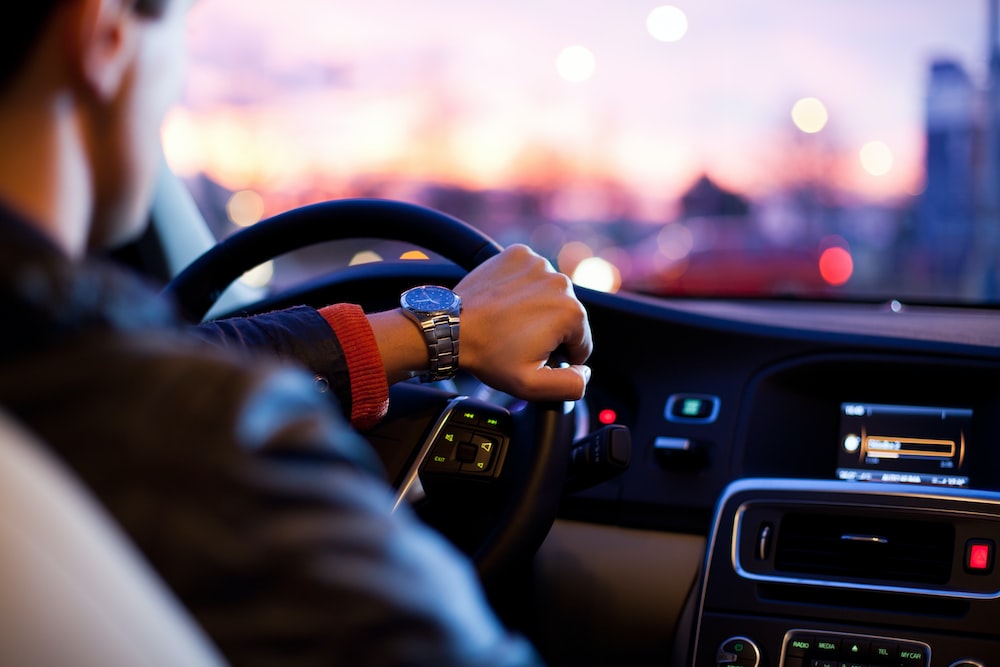General
- Your mindset should be to demonstrate safe, smooth driving at all times.
- No sudden maneuvers or abrupt speed changes. Yield right of way to pedestrians when necessary.
- Execute all turns slowly and smoothly. If you don’t think you have enough time to go slowly, then don’t go! Wait until you get a bigger window.
- Gather information using your windshield view, mirrors, and blind spots. Then, use that info to make informed decisions.
- Use points of reference to determine where you are in a lane. Ex: Figure out where the left and right lines show up on your windshield when you are centered.
- Be defensive. Look far ahead and early. Your goal is to spot / predict other drivers’ mistakes so you can stay safe.
- Check your mirrors and blind spots often, especially anytime you turn or change lanes. Do this check even if there’s no likely danger there.
- On the test, yellow lights should be treated as red. If it’s safe enough to stop when you see a yellow, you must stop.
- Online videos make the test look much harder than it actually is. There is some luck involved, but if you’re able to drive in normal situations, the test (hopefully) shouldn’t be too bad.
Intersections
- Good stopping distance is when you can see the front car’s tires touch the ground, plus 1 feet or so. This is longer than you would think at first!
- Make sure to check left and right traffic at intersections, even if the light is green. There might be a pedestrian trying to cross with a red light.
- At a stop sign, make a complete stop and wait for at least 3 seconds. Do your traffic checks during this time.
Speed
- Residential streets normally don’t have well drawn-out lines or traffic lights. Speed limit is 25 MPH.
- Local streets have traffic lights. The speed limit is usually 30, 35, or 40 mph - the wider the road, the faster limits it typically has. If unsure, drive at a speed in between two values.
- You’re allowed a 5 mph buffer below or above the posted speed limit. Driving too slow is also dangerous, so if traffic conditions allow, try your best to reach the speed limit.
- Try to keep a 3 second following distance. 2 is ok, but aim for 3.
Turning
- Steer with both hands together. In general, always keep one hand at the top of the wheel to maintain control, moving hands to the top as necessary to avoid crossing over.
- Look where you want to go. Specifically, look through the left window for 90 degree left turns. See this video.
- Start turning the wheel earlier, to create a curve-shaped turn rather than a sharp one.
Unprotected Left Turns
- Pull up into the intersection when the light turns green. That way, you’re allowed to turn even if the light turns yellow or red.
- Yield to pedestrians crossing the road and traffic going straight. Turn at the same time as opposing turning traffic.
Right Turn on Red
- Stop completely behind the limit line no matter what.
- Allowed (if no signs forbid it), but never required. Only attempt to turn on red if you are 100% sure it is safe.
- If the intersection is blind, or there are too many cars, or you feel hesitant, just wait for a green light.
Dedicated Turn Lane
- These lanes are physically separated from other traffic, and allow you to turn no matter what the traffic light color is once you yield to pedestrians and traffic on the ending road.
- When waiting to merge, stop near the end of the turn lane for a better view and to give more space to other vehicles.
Lane Change
- Signal for at least 3 seconds. During this time, do a traffic check (rear mirror, then side mirror, then blind spot). Then, slowly move into the desired lane. Finally, remove your signal.
- Make sure to maintain speed during lane changes.
- Do not perform a lane change in an intersection. You can signal before the intersection though (let your examiner know your intentions).
Reversing
- Three pieces of info to signify you are near the curb: You feel a drop in the wheel, you’re aligned based on the cars in front, and your point of reference (curb is at the middle of the windshield wipers) is met.
- Put your right hand on the side passenger’s seat cushion when backing. Look out the back window, checking side mirror / backup camera occasionally.
- The door handle in the side mirror can be used to tell if you are parallel to the curb, and if not, which direction to adjust. Points of reference are just as important here!
Last updated: 01 September 2023
Back to previous page
